|
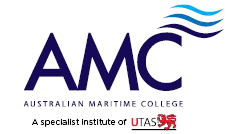
ABOUT
AMC
The Australian Maritime College (AMC) is a tertiary education institution based in Launceston, Tasmania and is an institute of the University of Tasmania. AMC is Australia's national centre for maritime education, training and research. It has two campuses located within 50 kilometres (31 mi) of each other in Northern Tasmania, each with different facilities and residence.
AMC comprises three national centres that offer courses in maritime engineering, marine environment, maritime logistics and seafaring. The national centres are:
* The National Centre for Maritime Engineering and Hydrodynamics
* The National Centre for Ports and Shipping
* The National Centre for Marine Environment and Resource Sustainability
AMC also has a commercial arm, AMC Search Ltd, that provides maritime related training and consultancy for a wide range of international and Australian organisations and individuals including the Federal Government Pacific Patrol Boat Program.
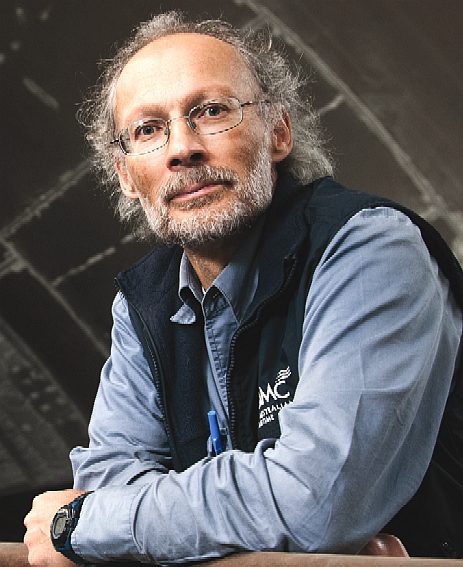
Professor Neil Bose, principle, Australian Maritime College, Tasmania
THE
IAMU
AMC is one of the seven founding members of the International Association of Maritime Universities (IAMU), which represents five continents.
They are globally recognized as being a center for excellence, with a multi-million dollar suite of specialist teaching, learning and research facilities,
that are internationally acclaimed.
AMC's
facilties are utilised by government bodies and maritime related businesses world-wide.
Their experienced professional, teaching and research staff have extremely strong industry links.
The main campus is located on the banks of the beautiful Tamar River in Australia’s picturesque island state of
Tasmania, at Newnham in Launceston. Launceston is a vibrant regional city known for its stunning architecture, beautiful natural setting and Mediterranean
climate. The beach, snowfields, wilderness (and the mainland) are less than an hour away.
Their second campus is at Beauthy Point, home to their coastal seafaring students and AMC’s
fleet of training and research vessels.
Students are offered flexible course options, including: full-time, part-time and online distance study. AMC offers a wide range of courses, including vocational certificates at many levels, bachelor degrees and diplomas; as well as postgraduate certificates and degrees, including doctorates. Whether it’s captaining a vessel, safeguarding marine environments, designing advanced ocean engineering structures, farming seafood or keeping the world’s goods
moving.
There are many generous scholarships on offer.
AMC graduates are in demand world-wide, with their alumni spread across 56 countries: indicating that AMC
could be ‘Your Ticket to the World’.
The growing maritime, marine and offshore sectors are an exciting and strategic area of growth for AMC at the University of Tasmania. I look forward to welcoming students who are looking for rewarding careers and real-world research opportunities.
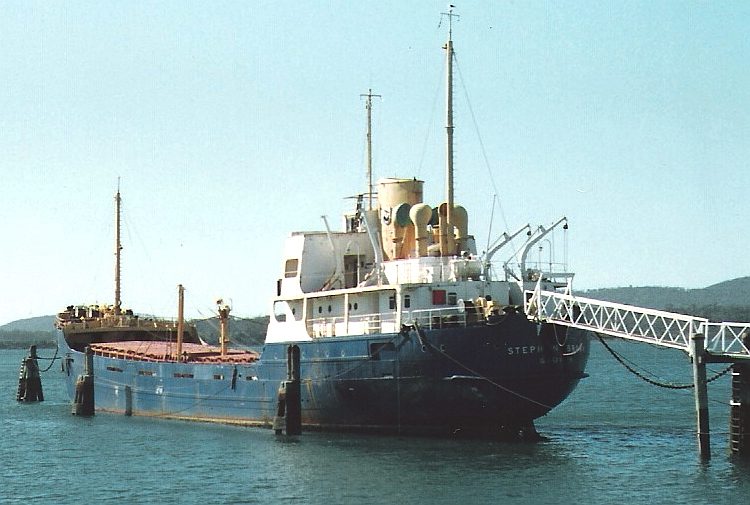
The
'RV Stephen Brown' - AMC training ship
NEWNHAM
CAMPUS
The AMC's main campus is situated at Newnham, 6 kilometres from the centre of Tasmania's second largest city, Launceston. Facilities located at the Newnham campus include:
* Centre for Maritime Simulation
Recently refurbished facility that boasts a full mission bridge, tug bridge and six smaller, fully integrated simulators capable of reproducing busy ports in a range of conditions.
* Towing Tank
The only commercially operating facility in Australia, this 100-metre (330 ft) long tank is used to measure the resistance of ships hulls in order to provide powering predictions.
* Model Test Basin
This 35-by-12-metre (115 ft × 39 ft) facility is ideally suited for conducting hydrodynamic experiments with an emphasis on maritime operations within shallow water environments.
* Aquaculture Centre
One of the only dedicated facilities for the study of fish and shellfish cultivation in Australia and as such has extensive aquarium facilities used for both research and teaching.
* Cavitation Research Laboratory
This facility is dedicated to the study of cavitation - vapour cavities formed by low pressure - on foils, propellers and other underwater forms. It also features rigorous control of dissolved and free small bubble gas content.
* Survival Centre
The Centre is used for the conduct of training exercises, to test new life saving appliances and for some research activities. It consists of an indoor heated pool and a mock ship’s superstructure, complete with life raft launching facilities.
The AMC is unique as it is the only University in the world to have all these facilities in one area.
AMC also has a Marine Firetraining Centre located at Bell Bay, 48km north of Launceston, which is equipped with a full range of marine firefighting equipment and specialises in practical training.
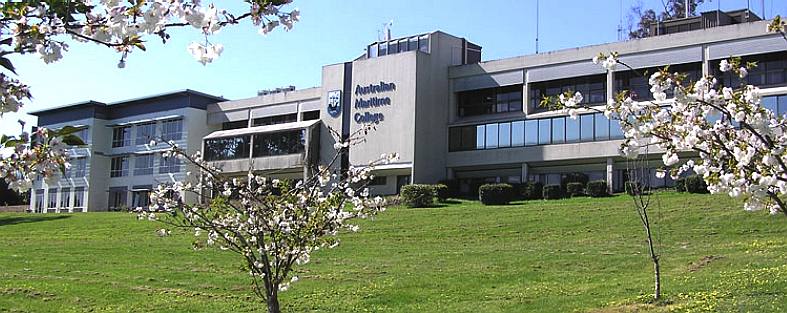
RESEARCH
AUV UBC-GAVIA
According
to the Australian Maritime College, they are set to play an integral role in pioneering water physics research thanks to the arrival of the autonomous underwater vehicle UBC-Gavia:-
"Under an agreement with the University of British Columbia, Canada, the research platform will be based at AMC for five years and used to conduct surveys on projects including seafloor mapping, mixing in the water column and under-ice flow dynamics in lakes and oceans.
The torpedo-shaped device is made of anodised aluminium, pressure rated to 500m and features a sidescan sonar and optical camera that captures images at four frames per second. It can be used to measure water column velocities, temperature, salinity, chlorophyll, turbidity and dissolved organic matter.
Dr Alex Forrest, researcher and lead on this collaboration, said the UBC-Gavia was capable of collecting data from locations that would otherwise be inaccessible such as under ice, in caves and far away from surface vessels.
Unlike remotely operated vehicles (ROVs), AUVs can be pre-programmed to profile underwater environments on both the horizontal and vertical axes, providing a three-dimensional picture of the physical processes taking place.
“AUVs are a tool to do good science even though they are predominantly used for long-range surveys such as oil and gas exploration or pipeline surveys,” Dr Forrest said.
“My specialty is examining environmental fluid mechanics – I study mixing in the water column and how different water masses interact. One of the aspects I’m interested in is how water mixes near the ice surface, forms eddies and generates turbulence.
“A lot of this is primary research to try and prove that these processes exist and to try and innovate new ways to study physical processes that we may or may not understand.”
UBC-Gavia last saw action on an international research trip to Lake Kilpisjärvi, Northern Finland in May to investigate winter limnology (the study of lakes during winter) and the impacts of climate change in temperate and polar lakes.
Traditionally it was thought that ice cover arrests all water motion in lakes, but the researchers discovered a distinct pattern of upwelling in the middle. The observed pattern indicates that the Coriolis Effect plays a potential role in ice covered lakes.
The Coriolis Effect is the term used to describe the curvature of global winds, ocean currents and everything else that moves freely across the Earth’s surface due to the planet’s rotation. It is commonly thought of in terms of the way water spins down a drain.
“This finding is quite exciting as it hasn’t been shown previously. Not only is there mixing but there’s mixing happening basin-wide in these lakes and it’s being driven by Earth’s rotation, which we’ve always assumed was negligible either under winter conditions or in lakes in general,” Dr Forrest said.
“It impacts on how we view ice break-up, how we view water quality in the winter, how lakes get reoxygenated and how nutrients are transported in the winter. I would argue that it fundamentally alters how we view lakes in terms of winter dynamics.”
The team plans to visit the same lake a month earlier next year to collect data on what drives the onset of these processes and combine it with their modelling efforts.
Meanwhile, there is potential for the UBC-Gavia to be used in cross-disciplinary projects off the East Coast of Tasmania investigating the influence of shelf break dynamics on harmful algal blooms and the seafloor mapping of urchin barrens. Negotiations are also underway for a research trip to Antarctica during 2014/15.
Dr Forrest’s AUV expertise is well utilised on campus at AMC, where he teaches classes in subsea engineering and underwater vehicle technologies to ocean engineering and naval architecture students.
This year’s final project will challenge students to design, build and test AUVs made from PVC for under $300. An AUV student club, AMC Autonomous Technologies, has also been established with the aim of participating in a national competition next year.
It was the prospect of working in a maritime engineering department that attracted Dr Forrest to join AMC from the University of California – Davis in the United States.
“And also because we have strong connections to the Institute for Marine and Antarctic Studies, CSIRO and the Australian Antarctic Division, there’s an excellent opportunity to be involved with southern ice,” he said.
“Because these (AUV) platforms are designed for the ocean, there’s immense potential to crossover the science with the engineering.”"

UBC GAVIA: FAST FACTS
Made of anodised aluminium
Measures: 2.8 metres long x 30cm diameter
Weight: 75kg in water
Pressure rated to 500m
Features: sidescan sonar and optical camera (4 frames per second)
Measures: water column velocities, temperature, salinity, chlorophyll, turbidity, dissolved organic matter.
Power source: lithium ion battery (3-5 hours of battery life before it needs recharging)
It is six years old and valued at $800,000
Typical scientific applications:
Oceanography
Limnology Habitat assessment
Hydrography
Bathymetric surveys
Archeology
Wreck finding and mapping
Bottom type classifications
Mid water analysis
3D CTD mapping
Current profiling
Under ice surveying
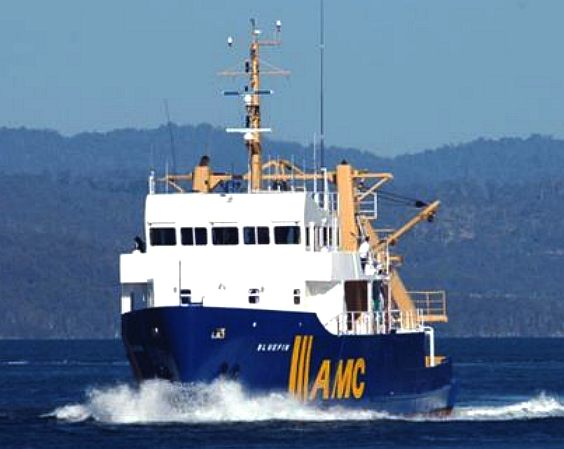
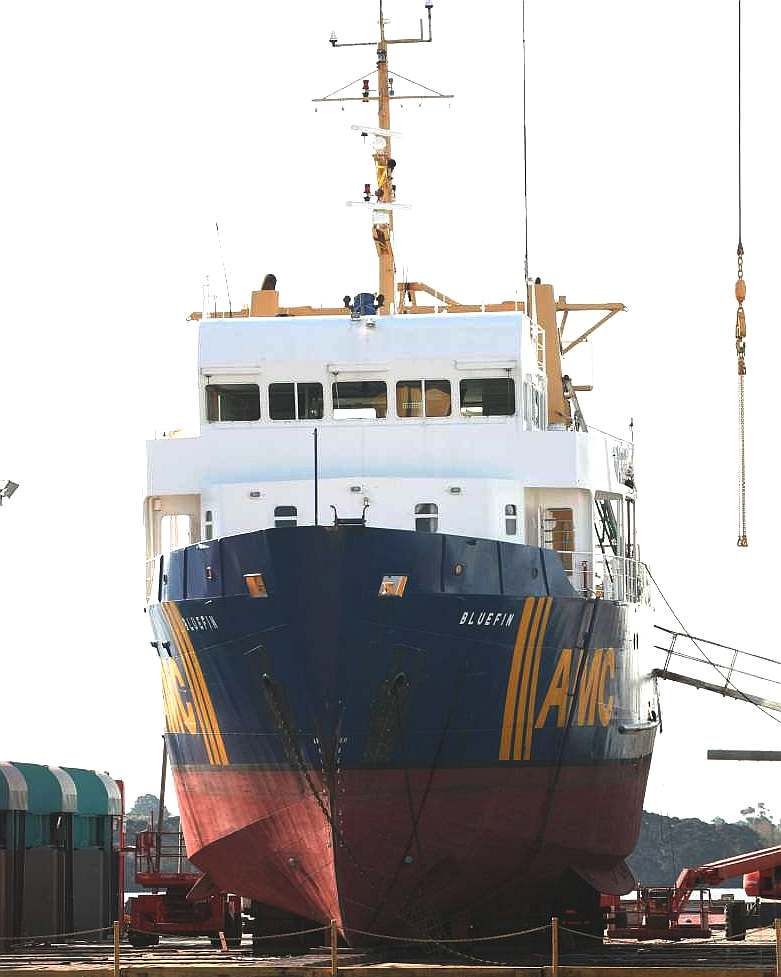
The
'Bluefin' - AMC training ship
CONTACTS
Australian
students - can call the UTAS student contact
centre on 1300 363 864.
International
students should also complete our online enquiry form.
Or if you don’t have internet access, you can call +61 3 6324 3775
or fax +61 3 6324 3924
Address
- Newnham Campus:
Postal: Street
Address:
Locked Bag 1399
Maritime
Way
Launceston Tasmania 7250
Newnham
Tasmania 7250
Address
- Beauty Point Campus
:
Postal: Street
Address:
Locked Bag 1409
38
Bagot Street
Launceston Tasmania 7250
Beauty
Point
Tasmania 7270
General
Telephone Enquiries:
Human Resources Enquiries:
(Other
than course enquiries - UTAS Switchboard ) To
view positons vacant at the Australian Maritime College
T: +61 3 6324 3999 for
both Academic and Professional staff, please click
here
Media/Advertising
Enquiries:
Business/Sponsorship Enquiries:
E:
media@amc.edu.au
E: marketing@amc.edu.au
Office
of Maritime Communication
AMC Search:
T:
1300 365 262
T: +61 3 6324 9850
E: amcom@amc.edu.au E:
searchinfo@search.amc.edu.au
W: http://www.amc.edu.au/omc
W: http://www.amcsearch.com.au/
MARINE
ACADEMIC INSTITUTIONS A-Z
Australian
Maritime - Geneve
- Hawaii
Renewable - NERC
- Newcastle
Naval
NOC
Oceanographic - Plymouth - Portsmouth
- Seoul
Naval - SOTON
Strathclyde
Marine - Sussex
- TU
Delft - USP South
Pacific - Webb
Institute
LINKS
http://www.amc.edu.au/
http://www.gavia.is/
http://www.strath.ac.uk/na-me/
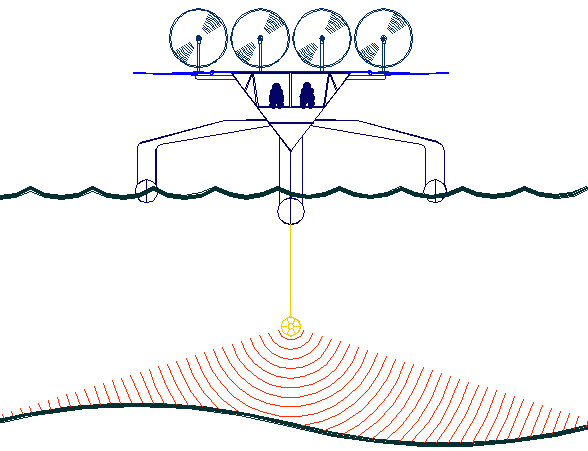
The
key to accurate oceanographic survey is continuous monitoring,
for which the Bluefish SNAV
platform is a robotic ocean workhorse. Based on a stable
SWASH
hull this design is under development by British
engineers. The robot
ship uses no diesel fuel to monitor the oceans autonomously (COLREGS
compliant) at relatively high
speed 24/7 and 365 days a year - only possible with the revolutionary (patent) energy harvesting system. The
hullform is ideal for automatic release and recovery of AUVs, ROVs
or towed arrays, alternating between drone and fully autonomous modes.
International development partners are welcome. This vessel
pays for itself in fuel saved every ten years.
|







